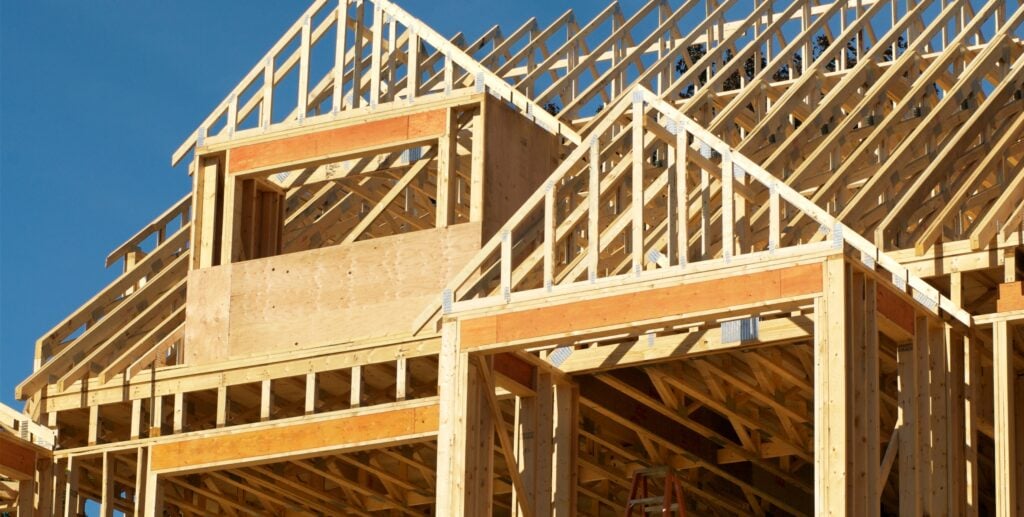Builder Confidence Falls for the Fourth Month in a Row—What’s Going On?
The National Association of Home Builders (NAHB)/Wells Fargo Housing Market Index (HMI), released last week, showed a six-point drop in builder confidence. This is the fourth consecutive drop recorded this year. Builder confidence has fallen a total of 22 points since July and is currently at 34, the lowest level since December 2022.
These stats are unsurprising, given the economic climate throughout 2023, with signs of improvement only just beginning to emerge.
What’s Going On in the Construction Industry?
A perfect storm of factors has created the current low-confidence mood in the construction sector. Ongoing building supply issues, rising costs, and labor shortages are rocking the industry.
But while all of these problems began during the pandemic, builder confidence remained high so long as low interest rates kept the housing boom going (i.e., buyers kept buying whatever was available). Builder confidence stood at 84 in December 2021—a whopping 50 points above the current level.
Jonathan Ayala, founder and CEO of Hudson Condos, confirms that things indeed have been tough for builders in 2023: ‘’We face immense headwinds, ranging from prohibitively high mortgage rates stifling buyer demand to suffocating construction costs and buildable land shortages squeezing margins,’’ he told BiggerPockets.
It is notable that the results of the November index are based on data collected before the latest Consumer Price Index release, which shows that inflation is decreasing. However, while the improvement in inflation rates may be signaling an interest rate easing next year, which will help the construction industry, this economic indicator alone may not be enough to restore builder confidence fully.
Ayala is firmly of the opinion that ‘’while rate relief could boost activity at the margins, the only viable path forward relies on coordinated policy intervening around land-use regulations, materials costs, trade talent shortages, and infrastructure financing.’’
While there may be some signs that the costs of building materials are stabilizing, the construction labor market has a long way to go before it closes the severe supply-demand gap for workers. Last year, the Associated General Contractors of America survey revealed that 91% of contractors reported having trouble filling positions. The construction industry still needs an additional 546,000 workers to meet the demand for new homes in 2024.
The problem is not as simple as the industry struggling to meet demand, though. High building costs, coupled with high mortgage interest rates, translate into homes that are ultimately unaffordable for buyers.
What Can Builders Do?
In response, builders can offer sales incentives—and the November NAHB Index shows that 60% of builders did so, with 36% cutting their home prices. The number of builders who slashed their home prices was up from 32% in the previous two months.
The price reduction tactic works, but only up to a point. Builders who lack confidence in their construction projects’ profitability eventually scale down their building operations. Buyers (and investors) end up with a scarce inventory of expensive homes. It’s a catch-22 dynamic in which the whole new housing start ecosystem suffers.
Ayala’s summary of where the home development sector stands now is that ‘‘until underlying profitability prospects improve, development enters a risky footing, jeopardizing housing access further.’’
Of course, this worst-case scenario isn’t the only probable one. The NAHB is still forecasting a 5% increase for single-family starts in 2024 as financial conditions improve. In particular, the much-anticipated interest rate easing, which may follow an anticipated reduction in inflation rates in the spring of 2024, is likely to return many buyers to the housing market. This, in turn, should improve builder confidence and increase both profitability and, ultimately, new construction figures.
According to NAHB chief economist Robert Dietz, ‘’While builder sentiment was down again in November, recent macroeconomic data point to improving conditions for home construction in the coming months.’’ The big hope right now is for mortgage rates to go below 7.5%, which ‘’will price-in housing demand and likely set the stage for improved builder views of market conditions in December.”
While builder confidence may take a while to get back to its 2021 levels, any improvement will be a much-needed step in the right direction at the end of 2023.
Ready to succeed in real estate investing? Create a free BiggerPockets account to learn about investment strategies; ask questions and get answers from our community of +2 million members; connect with investor-friendly agents; and so much more.
Note By BiggerPockets: These are opinions written by the author and do not necessarily represent the opinions of BiggerPockets.
